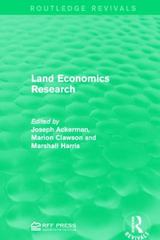Question
In Wisconsin and Ohio, farmers are dumping thousands of gallons of fresh milk into lagoons and manure pits. An Idaho farmer has dug huge ditches
In Wisconsin and Ohio, farmers are dumping thousands of gallons of fresh milk into lagoons and manure pits. An Idaho farmer has dug huge ditches to bury 1 million pounds of onions. And in South Florida, a region that supplies much of the Eastern half of the United States with produce, tractors are crisscrossing bean and cabbage fields, plowing perfectly ripe vegetables back into the soil. After weeks of concern about shortages in grocery stores and mad scrambles to find the last box of pasta or toilet paper roll, many of the nation's largest farms are struggling with another ghastly effect of the pandemic. They are being forced to destroy tens of millions of pounds of fresh food that they can no longer sell. The closing of restaurants, hotels and schools has left some farmers with no buyers for more than half their crops. And even as retailers see spikes in food sales to Americans who are now eating nearly every meal at home, the increases are not enough to absorb all of the perishable food that was planted weeks ago and intended for schools and businesses. The amount of waste is staggering. The nation's largest dairy cooperative, Dairy Farmers of America, estimates that farmers are dumping as many as 3.7 million gallons of milk each day. A single chicken processor is smashing 750,000 unhatched eggs every week. Many farmers say they have donated part of the surplus to food banks and Meals on Wheels programs, which have been overwhelmed with demand. But there is only so much perishable food that charities with limited numbers of refrigerators and volunteers can absorb. And the costs of harvesting, processing and then transporting produce and milk to food banks or other areas of need would put further financial strain on farms that have seen half their paying customers disappear. Exporting much of the excess food is not feasible either, farmers say, because many international customers are also struggling through the pandemic and recent currency fluctuations make exports unprofitable. "It's heartbreaking," said Paul Allen, co-owner of R.C. Hatton, who has had to destroy millions of pounds of beans and cabbage at his farms in South Florida and Georgia. The widespread destruction of fresh food at a time when many Americans are hurting financially and millions are suddenly out of work is an especially dystopian turn of events, even by the standards of a global pandemic. It reflects the profound economic uncertainty wrought by the virus and how difficult it has been for huge sectors of the economy, like agriculture, to adjust to such a sudden change in how they must operate. Even as Mr. Allen and other farmers have been plowing fresh vegetables into the soil, they have had to plant the same crop again, hoping the economy will have restarted by the time the next batch of vegetables is ready to harvest. But if the food service industry remains closed, then those crops, too, may have to be destroyed.
Trinidadian food producers are yet to dump and discard of foods. In an effort to prevent this from happening, consider yourself as entrepreneur in the agri-food sector who can provide solutions to Trinidadian food producers, to help them not have to dump or discard of their produce.
- How would you compare the situation described in the text with the current situation in Trinidad and Tobago?
- Explain in detail a business solution you can suggest for local producers. Your solution can be either a product or service.
- Would this solution facilitate the minimization of dumping and discarding of food?
- Why should your solution be considered over other possible competitors?
- Discuss any two (2) possible contributions your solution could make towards Trinidad and Tobago's national food security.
Step by Step Solution
There are 3 Steps involved in it
Step: 1

Get Instant Access to Expert-Tailored Solutions
See step-by-step solutions with expert insights and AI powered tools for academic success
Step: 2

Step: 3

Ace Your Homework with AI
Get the answers you need in no time with our AI-driven, step-by-step assistance
Get Started


